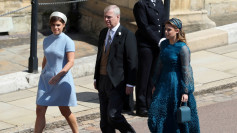Archaeologists in Egypt have uncovered more than 100 wooden sarcophaguses, many with mummies, in the necropolis of Saqqara. The find is believed to be the largest archaeological discovery this year.
Egypt officials said that the more than 100 coffins are estimated to be around 2,500-years-old. Apart from coffins, several artifacts such as funeral statues, jars, jewelry and funeral masks were unearthed.
The minister of Egyptian tourism and antiquities, Khaled el-Enany, says most of the finds were "in perfect condition of preservation." He added that given the quality of the items discovered they likely belonged to the area's richest citizens.
"This discovery is very important because it proves that Saqqara was the main burial of the 26th Dynasty," Egyptologist, Zahi Hawass, says.
Archeologists said that the discovery should provide them with more knowledge about life during the mid-600s B.C. and the mummification techniques used during that time.
Officials plan to exhibit the artifacts at several museums. Most of them will be on display at the Grand Egyptian Museum, which is still under construction. The archeological center is near the Giza Pyramids and is expected to be completed within the next year.
The discovery is the latest in a series of historical finds in Saqqara. The excavation site in the city, which used to be the necropolis for the Old Kingdom capital of Memphis, has been the source of discoveries in recent years.
The area is currently a UNESCO world heritage site and archeologists expect to find more artifacts. Archeologists are currently excavating what they believe to be a workshop used to prepare bodies for mummification.
The latest discovery is expected to be a big boon to the country's economy, which is heavily reliant on tourism.






